- Do not discard methods such as Pomodoro as overly simplifying or lacking flexibility (for those not into tomatoes: dividing your work into small, 15-30 mins. chunks, separated by short (5-10 mins.) breaks). Pomodoro may be surprisingly effective in identifying the ways you waste your working time (see what takes you during breaks and what makes them harder to finish), and in learning how to quantise your tasks into well-defined steps. My all-time favourite in implementing this method is the Be Focused app – but the Internet abounds in other options.
- Keeping track of ones’ calendar is one of the most annoying activities. Try to cultivate the following habit: the moment you plan a meeting, receive and invite, decide on a task or receive a task – put it into your calendar. Do not postpone doing this – your few taps on your phone away from permanently recording the task for future and freeing your mind from having to remember it. Also – make it a habit to check your calendar every morning.
- Do the same with a to-do list (yes, you want to have one, desperately). Some picks to consider – Todoist app, Tasks app, or whatever speaks to you functionally and visually. I would also like to preempt a question you surely will have: isn’t using calendar and a to-do list superfluous/too time consuming? It may be – but clever people have come up with solutions that connect to-do lists with calendars in a seamless way. If you want a hassle-free experience, without having to reschedule or move items as new things enter your agenda, consider checking out AI tools that manage your calendar for you. My current favourite is reclaim.ai – I honestly do not remember when I had to manually reschedule anything in my calendar.
- If a task/activity is taking too much time (e.g., because it is too difficult and you’re stuck without new ideas, or it begins to bore you) – leave it for a while (unless, of course, your being chased by a hard deadline, breathing frantically into your neck). Wonders happen when you set a task or problem aside or – even better – sleep with it.
- During the day, deal with the least liked tasks first.
- Don’t be afraid to declare some ours of your day/week as off-limits for others (within the limits of reason and your responsibilities, of course).
- To retain sanity and balance – try to do work at work, and non-work/fun things elsewhere. Don’t mix you working and leisure spaces. And for the sake of all known gods – don’t take work to bed. Some things do not mix well – like oil and water, or work and resting.
|
By Szymek Drobniak Time is money – it’s a truism that nobody would dare to question. In our particular type of job – in being a scientist – time also equals benchmarks, indices, track record. The more time we have – the more papers we should be able to publish, the more students to supervise, the more brilliant ideas turn into reality. Interestingly, science also tends to be particularly rich in people representing all kinds of neurodiversity. My hypothesis is that such people are also often particularly creative. Unfortunately, certain kinds of neurodiversity can throw sand into well-oiled gears of our scientific work. Here’s a bunch of recommendations a veteran of ADHD, such as myself, can offer to make the working scientific life of at least some of you a bit more predictable and satisfying.
0 Comments
by Ayumi Mizuno
The SQuID (Statistical Quantification of Individual Differences*1) statistical workshop took place this March at Hokkaido University in Japan (Shinichi is a member of the SQuID team. He and my PhD supervisor decided to hold the workshop here). I had only attended workshops and seminars as a student before, but this time, I also prepared this workshop as a local staff member for around six months, with Shinichi. The lectures were amazing. The course began with the basic linear model, but on the last day, we had the chance to conduct a simulation on our data using the squidSim package in R. Through the workshop, I became more familiar with how linear mixed models work and what insights they can provide about my research. In addition, I learned that simulations help understand the models better and are useful for planning data collection and analysis. The participants had diverse research backgrounds and countries of origin, so the conversation during break time was also exciting. Watching participants enjoying coding and interacting with others made me feel all my work had paid off. I had predicted that some accidents might happen, but everything went smoothly. Even though preparing the workshop took up a lot of time*2, it was definitely a valuable experience for me. To conclude, I would like to share four small tips for people (like me) organising workshops or seminars for the first time. These are all general points but essential:
---------------- *1 Please check this link for detailed SQuID info.: https://squidgroup.org/ *2 I had some sleepless nights worrying about whether the workshop would go well. The scientific method is a long-standing framework used to teach aspiring scientists how to conduct research and experiments. However, I believe even well-established scientists could benefit from a reminder about the final, and arguably most important, step: communication of the findings. As many memes across social media would suggest, scientists hate writing. This hatred is further proven by the “file drawer problem” where researchers would rather leave completed experiments to die in the metaphorical (or physical) file drawer than to write and publish the work. I must acknowledge that there are a variety of reasons work doesn’t get published. Oftentimes, it’s the high paywall a lot of journals require for publication. Also of note are the biases against non-English (or English as a second language) researchers and the systemic barriers researchers from the Global South face. Even those researchers without these barriers and with publications do not communicate their work effectively. Recently, I published a second-order synthesis of coral health research, which found that while review-level literature was fairly well cited amongst scientific literature, the reach of this same research outside academia had much room for improvement. The high citations among academics makes sense, as much of research currently focuses on a “publish or perish” rhetoric, where publication is the last step of the scientific method rather than communication in general. However, research needs to be communicated to these external bodies, as these are often the groups which ultimately drive funding. Beyond publications and citations, scientists regularly participate in internal communication – most often at conferences giving presentations or creating posters about their research. However, conferences are also environments where scientists are speaking to other specialized researchers. In these cases, there’s no need to explain complex topics with simple language, which is a difficult skill only honed through practice. When these same presentations or posters are presented to a non-specialised audience, it often perpetuates the idea that STEM is difficult to understand and can only be known by an elite few. In the final year of my PhD, I committed to broadening my involvement in science communication (SciComm). There are so many avenues available to researchers to communicate their research. As such, science is the most interdisciplinary it’s ever been and has the ability to reach audiences all over the world. I’ve put together a list of the top ways I’ve found success in communicating my research. 1. Pub talks These are rare opportunities, though the most famous one occurs once a year called “Pint of Science.” Going to locations that people outside of the science field are likely to spend time is a great way of ensuring your research is reaching a wide audience. In these situations, I find it best to keep your explanations snappy and passionate. People generally respond well to enthusiasm and a more casual tone. 2. Comedy The universal way to relate to people. Comedy is less an opportunity to spread your research, and more about how you should communicate it. Oftentimes, people outside of science find science unapproachable or confusing. By bridging this gap in ways people empathise with, scientists can better relay their findings to groups outside their field. 3. STEM outreach events Outreach events are the most common way science communicators will reach the public. These events are great because they are often in person events and provide the opportunity to attendees to really engage with the science. In these settings, creating activities, physical models, specimen, or any way your audience can “get their hands dirty” in science is going to be a hit. 4. Guest talks (e.g., skype a scientist) While the name implies an invitation and thus no effort on the scientists part, guest talks usually come as the result of your own efforts. There are many programs which you can express interest for which will help connect you to parties interested in hearing about current research. I personally have worked with groups like CSIRO, Skype a Scientist, and Deadly Science – all of which are amazing organisations dedicated to increasing involvement in STEM. I’ve found lots of pictures and personal stories are great ways to engage with your audience, particularly if you’re delivering content virtually. 5. Social media In such a connected age, social media can be a great tool for communicating research. While researchers are most familiar with Twitter (now called “X”), I’ve found there is a growing community of SciComm specialists in other social media platforms. As Instagram and TikTok are huge hits with younger generations, researchers have created wonderful online personalities to engage with upcoming science enthusiasts to share their work, answer questions, and provide guidance. 6. Website Websites, while a great tool to have as a reference to your work and CV, are not the best way to communicate your research. They often need to be searched for, and as a single researcher (not a website controlled and advertised by your institution), traffic is quite hard to come by. While I recommend setting a website up so you can refer all your audiences from the above SciComm events to find you, these alone are insufficient. Treat your website like a center hub to which all your events, publications, media articles, socials, etc. are all connected. I recommend jazzing the website up with lots of photos and other content besides your CV. Giving people something to engage with may have them coming back for more! Happy communicating! by Malgorzata (Losia) Lagisz Systematic reviews (and meta-analyses based on a systematic review of literature) are extremely time-consuming. Anyone who conducted one in a rigorous and robust way can attest to this fact. Not surprisingly, researchers across disciplines have been looking for using computer algorithms and software to automate and accelerate systematic reviews of academic literature.
It is tempting to think that a recent development of a new generation of AI models and software has better performance and new capabilities. Especially, Large Language Models (LLMs) are trained on large datasets of written language (think ChatGPT and similar models). They can be operated by using user prompts in conversational language, rather than technical programming languages, which makes them user-friendly. Why not ask them to find relevant studies, highlight or summarise relevant information do the screening for you?
References:
by Shinichi During my study leave at Okinawa Institute of Science and Technology, OIST, Japan (2023), I walked to my office at OIST every morning. I often took a route where I could get a full view of the cobalt-blue coral sea of Tancha Bay and, in the distance, Ie Island. Then, I often thought this must be how a paradise would look like. Enjoying the view of a paradise, I had a secret. I was waiting for a “Love Letter from Canada” (which happens to be the name of a famous Japanese song). In fact, our 2023 started with a trip to the University of Alberta, Edmonton, Canada, where I applied for a Canada Excellence Research Chair (CERC), although there was no guarantee I would get one. An outcome was supposed to come out in early Spring, but it was already the 5th of May. For the previous two nights, I could not sleep in pain and walked around the OIST campus after midnight for hours. Earlier in the year, I was diagnosed with gallstones and was told I would have to have them removed at some point. On that day, I woke up at 3.30 am with incredible pain, so I could not go back to sleep. Instead, I started checking my email, and there was an email – the long-awaited letter – a CERC success! And I screamed for joy and agony, and I walked down to Tancha Bay to ease my excitement and throbbing pain. It was ~6 am when I returned home. Then, my wife, who just got up, took me to the hospital. It was a Japanese holiday, so only emergencies were open. To make a long story short; I got operated on and got gallstones removed. I had to stay in a hospital for a few days, which I had never done. On my hospital bed, feeling discomfort physically and mentally, I thought about how to tell my group members and friends about my news. The news of CERC was embargoed until the official announcement (it turned out, till mid-November last year), although I was allowed to tell people who would be affected, informally. I told the big news to my lab group members one by one online, and each of them was surprised, but they were very happy for me and my family, who were excited about the move despite the -20-degree winter experience in Edmonton early in the year. For I-DEEL, 2023 was another amazing year despite me being away a lot. Although Zoom meetings help, we have great group members who support each other and can work independently. Notably, Patrice and Sammy are nearly finishing their PhD after a difficult 4 years, coinciding with the biggest global event in my and their generation – the COVID-19 pandemic. For them, much of our interaction has been online. With all its limitations, we are lucky with virtual technology that connected our group together tightly in 2023 and the previous few years. Moreover, I feel privileged to mentor such a talented group of people who are enthusiastic, kind, intelligent and productive. So, thank you all - this is my love letter to all I-DEEL members.
by Matt Gibson Why do scientists commit fraud? If you are active in the scientific community, you are aware of many cases of research misconduct. It happens with significant, internationally recognised research [dias-paper], and it can happen at your university, too [1] [2]. This is a fascinating question partly because of the sensational nature of the drama but also because it can make us think about the social way in which we practise science. In this blog post, I'd like to talk about a neat paper I found by Liam Kofi Bright [on-fraud], which provides a formal model for why scientists might commit fraud. Take some of these high-profile cases: one that made a lot of noise around my research area was the case of Ranga Dias, who claimed to have discovered a room-temperature semiconductor earlier this year. This had been published in Nature and has since been retracted [dias-paper]. Because room temperature semiconductors would be a revolutionary material with wide-ranging applications from power transmission to digital electronics to medical imaging, it's almost certain that the researcher would be caught when other researchers. Given that the stakes and the probability of discovery are so high, why do it in the first place? You might say that the expectation is that they won't get caught, but this is also a puzzling belief suggests either:
The first explanation is a psychological one, which might be true. Still, it doesn't really explain the why of committing fraud. Much consideration is given to the first deliberate deception scenario: scientific fraudsters are bad apples or con artists who lack morals. However, the truth is likely much messier. There are many models of human behaviour, but one of the most prominent is the "rational choice theory". Rational choice models, as formalised by game-theoretic games, are rarely fun to play but can explain why people make the choices they do. Bright's model works within this framework; it is a game-theoretic account of the decision-making process by the scientific community. You might be familiar with well-known game-theoretic models such as the prisoner's dilemma or matching pennies. These are examples of zero-sum, two-player games with perfect information, which are also well-known and well-studied. Bright's model, by contrast, is not zero-sum, with incomplete information and many players. I'll briefly describe the premise of the model. The model assumes that the scientific community consists of scientists who are interested in theoretical statements that can be true or false (e.g. can a particular method of synthesis yield room temperature stable semiconductors). For simplicity, assume there are two possibilities, one of which Nature picks. Scientists privately conduct unreliable experiments that reveal evidence about the theory. Then, in light of the evidence, the scientists update their beliefs and publish their results; that is, they signal their beliefs about the theory. Periodically, the scientists gather at a conference to resolve the theoretical questions bugging them. The position that most scientists agree to become the received wisdom in the field and the scientists who have published in favour of that position are rewarded. Note that the scientific community may decide on a theory that does not agree with the state of affairs picked by Nature (e.g. phlogiston). So far, this is similar to other models of the reputation economy of science (e.g. Kitcher 1993). Bright introduces a wrinkle to assign scientists different motives: they may be pure credit seekers, pure truth seekers, or mixed credit/truth seekers. Truth seekers only want the scientific community and Nature to be in agreement, pure credit seekers only want to be seen to be on the right side of the community, and mixed credit/truth seekers would like for the scientific community to arrive at the truth but also to be on the right side of the scientific community. Moreover, the scientists also have a set of beliefs about what other scientists will publish. Scientists are motivated to fraud when they are motivated to publish a paper that supports an outcome that is the opposite of what was revealed by their experiments. Bright then looks at how changing the motive types would increase or decrease the incentives to commit fraud. Bright also looks at how behaviour assumptions about the cost of fraud and self-confidence would also affect incentives to commit fraud. Putting all this together, he derives several interesting (if pessimistic) results. The first result is that turning a credit-seeker into a mixed credit/truth seeker only dissuades people from committing fraud in a setting where they believe their opinion is irrelevant. Further, turning credit seekers into mixed credit/truth seekers can incentivise people to commit fraud in new situations. Pure credit seekers will always be incentivised to commit fraud when they believe their experiments are 100% accurate. Finally, even pure truth seekers can be motivated to commit fraud when they believe their results are incorrect. On the positive side, however, he can show that pure truth seekers are incentivised to lie in a strict subset of situations of the mixed truth/credit seekers. He also shows if there is a high price for committing fraud, then pure credit seekers will honestly report their experiments when certain conditions are met: they think their beliefs will affect the community consensus, they believe in the true state of Nature, and they think the community will also eventually arrive at the correct theory. Bright has further interesting things to say about the scientific community in that paper. I encourage people to read it because he's a very clear writer and sometimes quite funny ( a rare trait in scholarly writing!). This model is attractive because formal analysis suggests counter-intuitive points. A standard theory is that the scientific credit system and the contemporary career pressures, are to blame [3]. While this is undoubtedly true for some cases, the motivation question is worth scrutinising. Bright shows that this is not necessarily the case; even people with ideal motives can be incentivised to commit fraud because of "noble lies". To me, this suggests that some problems about fraud are intrinsic to the scientific community because of the community nature of the decision-making. It's worth considering that truth-seeking is not always noble, nor is credit-seeking always villainous. When this is all formalised as a game-theoretic model and in this context, the relation to the celebrated results on voting theory like Arrows' theorem becomes more apparent. The scientific consensus is a process of plurality voting. In plural voting (like all other forms of voting), it is vulnerable to strategic voting (the Gibbard–Satterthwaite theorem); a voter receives a better payoff if their vote is not a true representative of their true beliefs. Scientists would be better off lying about their beliefs if that would cause the community to arrive at what they honestly think. I think it is also quite interesting to use these game-theoretic/economic models to understand the process of science. Moreover, these hypotheses are testable in a reasonably precise way. From observational evidence, it would be interesting to see how often this happens in practice. I'm also left wondering how often "noble lie"-type fraud happens. In particular, I keep thinking about two well-known and controversial experiments: the Stanford prison experiment and the Millikan oil drop experiment. The Millikan oil drop experiment, a canonical experiment to determine the charge of an electron, has been criticised for removing data points from his dataset: he published results based on only 58 out of 175 recorded points. The result is extraordinarily accurate, with 0.5% per cent of the accepted value nearly 100 years later. Yet the case is not clear cut because of the complexity of the experimental setup [goodstein-in-defence]: one person's exploratory data analysis and posthoc analysis can be another person's data dredging and p-hacking. I hope you'll agree there is much excellent work being done in the history and philosophy of science which is relevant to practising scientists. I think scientific misconduct is interesting for the same reason that a sociologist might be interested in criminal behaviour or an evolutionary biologist might be interested in the Galapagos islands because they represent an extreme. This extreme informs about the practice of science. References[1] https://www.smh.com.au/national/university-investigates-claims-of-research-misconduct-in-studies-on-ageing-20211013-p58zlx.html
[2] https://www.abc.net.au/news/science/2023-12-11/unsw-research-integrity-allegations-aric/103099286 [3] https://www.ft.com/content/c88634cd-ea99-41ec-8422-b47ed2ffc45a [4] https://www.vox.com/2018/6/13/17449118/stanford-prison-experiment-fraud-psychology-replication [5] https://en.wikipedia.org/wiki/Oil_drop_experiment#Controversy [dias-paper] https://www.nature.com/articles/s41586-023-06774-2 [on-fraud] Bright, L. K. (2017). On fraud. Philosophical Studies, 174, 291-310. http://www.liamkofibright.com/uploads/4/8/9/8/48985425/on_fraud_online_first.pdf [goodstein-in-defense] "In Defense of Robert Andrews Millikan" by David Goodstein (American Scientist, January-February 2001). by Ayumi and Coralie This month we had the privilege to attend the EvoMorph workshop in Okinawa organised by OIST (Okinawa Institute of Science and Technology Graduate University). We were a group of 25 participants selected to take part in an intensive program to learn methods and applications for the quantification and evolutionary analysis of morphology. The first part of the workshop was focused on morphometrics with technical sessions ran by Emma Sherratt. Morphometrics is a completely new fields to us – we are excited to think about how we can use it in our own research in the future! The second part of the workshop was focused on phylogenetic comparative methods ran by Liam Revell and Luke Harmon with some useful coding tricks. During our stay we had the opportunity to visit the OIST campus which is built within a thick forest with incredible facilities. The campus feels like a spaceship from Star Wars that landed in Jurassic Park. We are grateful to have been selected for this workshop and we would like to thank Dan Warren and Evan Economo for the organisation. Some highlights:
By Szymek Drobniak
Conferences can be scary and overwhelming – especially if you’re about to enter the fast-moving world of academia. Even having over 10 years of experience in doing research and participating in some of the largest conferences in my field – I still feel crippling anxiety every time I about to approach somebody at a large meeting. I still get flooded by waves of heat and racing heartbeats every single time I want to rise my hand and ask a question. What if the question will sound silly? What if the presenter won’t get it – or even worse: what if they misunderstand it? My ongoing struggle with crowd anxiety or self-esteem issues only make things worse. However – over time I’ve learned that even severe public speaking anxiety can be overcome, and even the shyest and introvert scientists can learn few tricks that help to navigate the intimidating world of congresses and conferences. Here’s what I’ve learned over the years. Even if my ways won’t work at first – they will hopefully convince you that you’re not alone, and that public meetings anxiety is something pretty natural. 1) Instead of throwing yourself into the vortex of people – try to be methodical. Before the conference check who’s attending it. Pick few names that you would like to meet or speak to. Check if they have a talk or poster – that’s the easiest way of meeting people and having a good starter topic. 2) Public speaking anxiety can overwhelm you to the point of losing the ability to speak! The easiest way of convincing yourself you’re all good? Say to yourself that during your talk you’re the expert. You know everything (about your topic ) and the audience is here to hear and admire your talk. You’re their guide and guru for the coming few minutes. 3) Not being able to answer questions after your talk may make you feel bad or afraid of how others judge your performance. But not knowing the answer to a question – or, in fact, not understanding the question! – is totally normal. If it happens just naturally move to the next one. Make sure the person asking the question is not left in the void: invite them for a chat after the talk, or casually suggest meeting over lunch or dinner to elaborate more. You will appear professional – and potentially get another opportunity to meet someone interested in your research. 4) Have a conference buddy – e.g., a colleague from your lab that attends the same conference, or a friend from another university you know is also at the meeting. Having someone to talk too during breaks will make you feel more comfortable and help you relax. Don’t be afraid to ask your friends for help with any sort of anxiety you may feel. Quite often just speaking about anxiety is a great way to weaken its effects on your life. 5) Try not to steer away from round tables and panel discussions – even if you stay quiet most of the time, they are great moments to see more experienced scientists in action. You may learn many under-the-hood secrets of your field, get to know the thought leaders in the discipline, and often forge new collaborations. 8) Always rehearse your talks – either on your own, or in front of your lab-mates. There’s nothing more stressful than a badly rehearsed talk that goes overtime and makes chairpeople to cut your microphone off. But – rehearsing does not mean “memorising”. Avoid learning the “screenplay” of your talk by heart – memorise the main points and try to story-tell around them. It will sound much more natural – and there’s less likelihood you’ll get stuck having forgotten a line or two. Somewhere around the 2/3 of your talk – try to have an emergency connection to your final slides – just in case you do run overtime and are forced to wrap up before reaching the end of your presentation. 7) If you’re organising a conference – see if you can make it a bit more friendly for neurodivergent persons. Few recommendations you might consider include:
We bumped into quite a bunch of people and hung out extensively with the PhD students and post-docs from Bob Wong’s lab. Their work zeroes in on a range of things, particularly the effects of pollutants and pharmaceuticals on various critters' behaviors. With our research intersecting in some places, we found ourselves engrossed in some engaging conversations. An intriguing encounter came our way when we met a researcher from South Australia who's deep into studying the impact of PFAS on dolphins. She’s on the hunt to uncover whether there's any link between those unusual mortality events recorded in that part of the continent and their run-ins with these pollutants. Intriguing, right?
By Patrice Pottier Recently, I was awarded the E&ERC Outstanding Postgraduate Researcher award, which commemorates exceptional achievements from PhD students at the Evolution & Ecology Research Centre (E&ERC). While overwhelmed with pride and gratitude, I believe it was also time for me to reflect on the circumstances and privileges that paved the path to this accomplishment. It is rather common to bask in the glow of success, yet rarely do we show our weaknesses, and the bumpy journeys that often lead to these accomplishments. I invite you to interpret my reflections in your own way, while acknowledging that every path is different and that the role of luck and privilege vary greatly between individuals. Let's start from the beginning. I was born a mentally and physically abled white male in the vicinity of Lyon, France. My mother was a first-generation immigrant from Russia, and my father was born in Algeria and later grew up in France. Shortly after my birth, my parents decided to relocate to Pointe-Noire in Congo, an environment that would soon be marred by the Republic of the Congo civil war. My sister was brought to the world in the midst of a civil war, etching a profound influence on our upbringing. After four years in Congo, my parents, fearful of escalating conflicts, moved us back to France. Like many scientists, my fascination for nature was innate. However, personal events distanced me from this passion until early in my adulthood. I moved cities every few years, preventing me from building lasting social connections. My father's work also took him away for months, sometimes years, culminating in a drawn-out, emotionally draining divorce. This turbulent period forced me to prioritise my mental health over all else – my quest for understanding biology took a back seat. The divorce also placed a financial burden on my mother, making daily sustenance a recurring struggle. This financial insecurity also separated my mother from her other son in Congo - a rift that, two decades later, remains. Undeniably, my upbringing was fraught with economic and emotional trials. However, this telling isn't a bid for comparison. Each of us encounters significant difficulties, some silently destructive despite their lack of obvious tragedy. I'm not insinuating that my journey was harsher than most - quite the contrary. Frankly, I was deeply lucky, and privileged. My upbringing in a secure country with a great health and educational system was a luxury denied to many. University was not a conscious and motivated choice, but more a refuge from indecision. I gravitated towards Biology simply because it resonated with me, and as university education was virtually free, it seemed like the logical choice. I chose this path by default. While my affection for biology now is unwavering, this was not an immediate realisation. My initial two years of university did not captivate me as much as I had hoped. My interest was selectively inclined towards courses concerning ecology and evolution, and the image of myself as a scientist was a blurry vision at best. I also did not think I was good enough to become a scientist. Yet, I stayed because I lacked other options. Luckily, accumulating tuition debt was absent in my journey. If I did, I certainly wouldn't have chosen a university path, and for this, I bear gratitude to the French public university system. Eventually, I fell in love with biology, and it is hard for me to imagine how I could possibly break this bond. I crossed paths with exceptional academics who sowed the seeds of belief that I too, can make a significant contribution to the world. The consistent guidance and encouragement from these remarkable scientists were truly transformative, and for that, I am eternally grateful. You might wonder, how does someone who just stumbled upon his interest in science end up pursuing a PhD? The answer is simple: luck and privilege. Yes, I was dedicated, hardworking, and increasingly captivated by my field, but so are many others. I was not working harder or smarter, nor was I more talented. Most of my opportunities came from being at the right place at the right time, meeting the right people. Towards the end of my undergraduate degree, I faced a daunting uncertainty about my future. My understanding of research was obscure as I was a first-generation scientist, and a PhD seemed an insurmountable challenge. Yet I was pushed to explore this option. The turning point came when I was offered an internship with Marlene Goubault, an associate professor at the University of Tours. This experience sparked a passion for research, and fully re-ignited my genuine interest in Biology. Upon this realisation, I recognised that a master’s degree and a PhD were my next steps. I pursued a master’s program at the same University, and I genuinely loved every second of it. This degree led me back to working alongside Marlene and her PhD student, Anthony Mathiron. During this time, I met a visiting professor from the University of Alabama, who happened to be Anthony's PhD co-supervisor, Ryan Earley. After a few beers at a pub and some good laughs, Ryan invited me to work with him. I was thrilled, but there was a hick. How could I possibly afford moving to the other side of the world for 6 months, with no income? Luck and privilege were again on my side. A bank agreed to lend me a loan, and Ryan pressured his university to pay me a small, yet life-changing, compensation. The stars aligned, and I was ready for more research. This certainly wasn't easy, however. My English proficiency was not great, and I had to run a research project, supervise undergraduate students, write, and build a social life in a new language. Yet I was privileged enough to have lived in a country where English is taught from a young age. I cannot imagine having to face these challenges with little to no understanding of English - it was already hard enough. Despite the challenges, Ryan’s continual support was my beacon of light. Thank you, Ryan. After this internship, I had no doubts I wanted to do a PhD. I was lucky to stumble upon an advertisement for a PhD program in the I-DEEL lab with Shinichi Nakagawa. To be honest, I was not too familiar with meta-analyses, nor was I too familiar with Shinichi's work. However, I was armed with curiosity and eagerness to learn. I applied, although I had little confidence in the outcome. To my surprise, Shinichi shortlisted me, I believe, thanks to recommendations from my previous supervisors. In parallel, I also tried for an RTP scholarship at the University of Sydney, only to soon realise I had little chances because my university wasn’t ranked highly enough. I was encouraged to apply regardless, but doubts clouded my hopes and determination. I never thought of university rankings until then, and this realisation made me doubt my chances of success for the UNSW scholarship. I felt trapped because of the university I had chosen, something now beyond my control. All I could do is wait and hope for the best. Unexpectedly, I was awarded the scholarship at UNSW, which filled me with happiness, excitement, and above all, gratitude. Shinichi gifted his energy and skills to put the odds in my favour. He devoted hours to ensure my application was competitive. I was also lucky my previous research experience with Marlene and Anthony resulted in two co-authorships. It's not lost on me that numerous individuals dedicate an often-higher level of effort in other labs without receiving the same recognition. I was at the right place, and surrounded by the right people, and I recognise that many did not have this chance. Thank you, Marlene, Anthony, for being so inclusive. Thank you, Shinichi, for your help in the application and for believing in me. There I was, ready to embark on my PhD journey in Sydney, yet financial constraints surfaced again. I had to buy a ticket to Australia, cover visa fees, and pay for an overseas student help cover upfront. I did not have this money. Though, I was lucky enough to be financially supported by my father to follow this journey. My luck stretches further. My supervisors, Shinichi and Szymek, proved to be extraordinary individuals, far removed from the horror stories of negligent or abusive mentors. Thank you both for your dedication and empathy. Another turn of good fortune was being granted a generous scholarship, which allowed me to focus solely on my research without having to juggle additional jobs. With this funding, I could organise workshops, attend professional courses, and go to conferences without applying for extra funding. I could also do most of my work remotely, which was a huge privilege when covid hit. Therefore, it is no surprise that I had more time to focus on my research and be productive. Frankly, I believe such an exclusive scholarship should not exist - all PhD students deserve these privileges. We all deserve a living wage. Reflecting on my journey, the evident narrative is not of an individual striving against odds, but rather a story of privileges and supportive networks. The cascading series of fortunate circumstances stemming from my French upbringing, the right connections, and sheer luck, guided my trajectory. If anything deviated along this path, I would not be here telling this story. Comparing my journey to my Congolese half-brother, Roderick, illuminates these privileges in action. Despite working harder than I ever did, Roderick never achieved financial stability due to his background and lack of opportunities. None of my experiences compare or outweigh the struggles others with less privileged backgrounds face. Roderick is one of the most dedicated people I know and is sacrificing nearly everything to live from his passion, animation. If he had decided to follow an academic path, I am convinced he wouldn't have made it - even if he worked orders of magnitude harder than any other students. Perhaps I should ask, how many Congolese academics do you know? Do you think there aren't many because of a lack of abilities, or a lack of privileges and opportunities? Perhaps the take home message here is to recognize privilege. Academic expectations must be recalibrated to account for individual circumstances rather than a sole focus on university rankings, prestige, and research output. True achievements are only understood when viewed through the lens of privilege. I hope for a future where equal opportunities are extended to all, irrespective of their background. For this change to happen, we require a collective change in perspective, a genuine understanding of the myriad of challenges individuals face. I firmly believe in equity over equality, a sentiment I hope we can achieve in Academia and beyond. |
AuthorPosts are written by our group members and guests. Archives
April 2024
Categories |



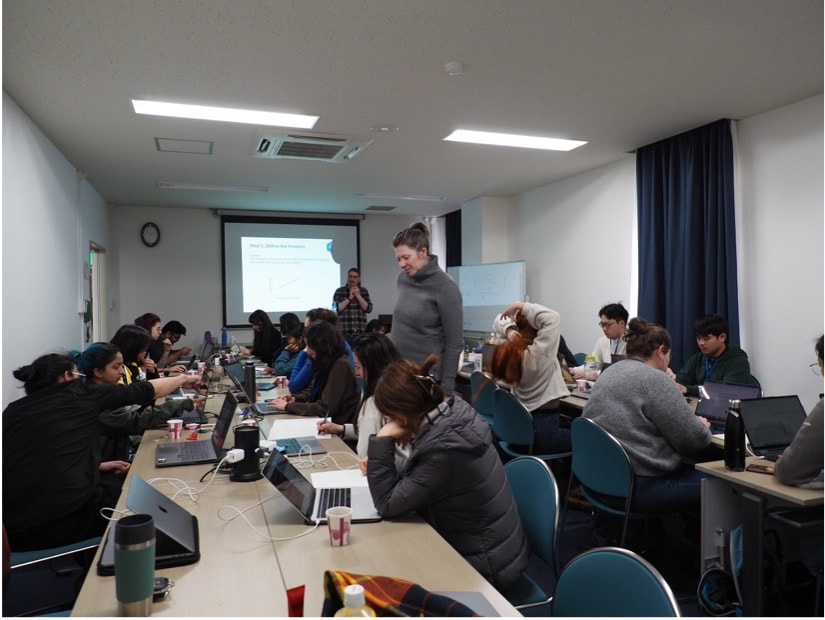
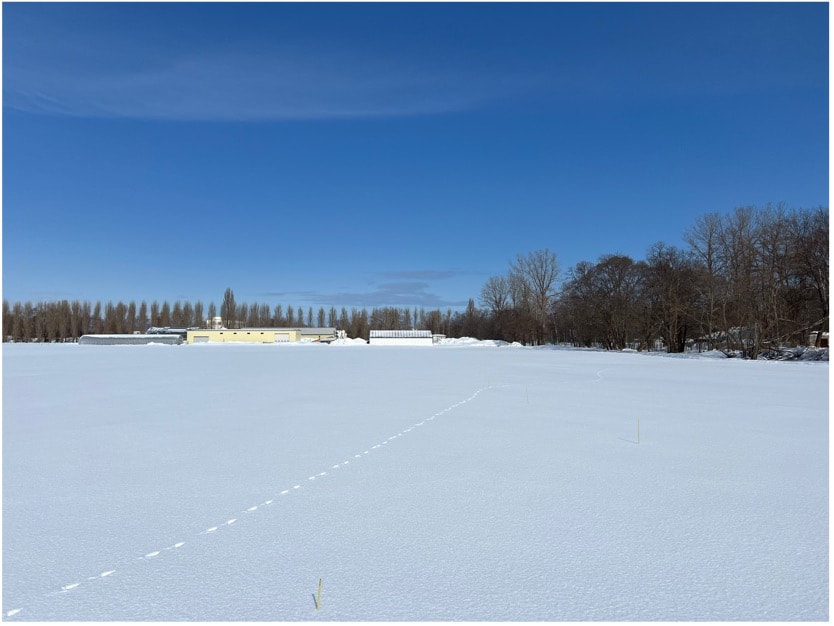






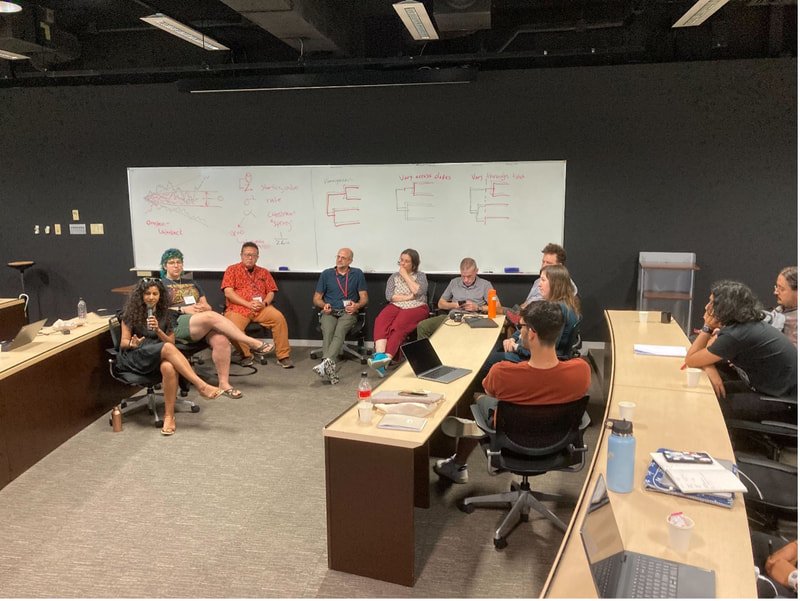


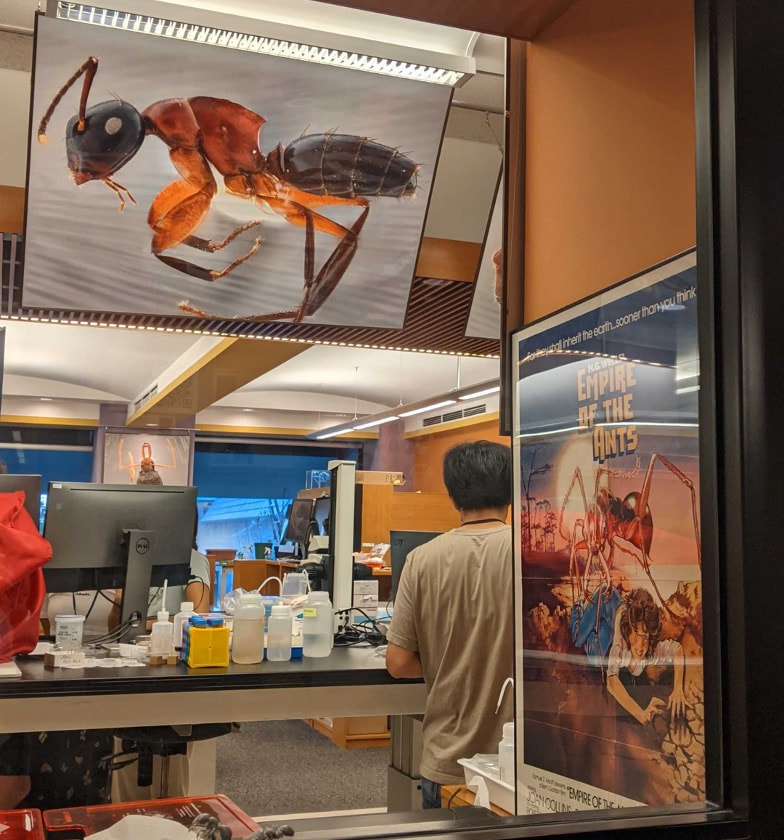
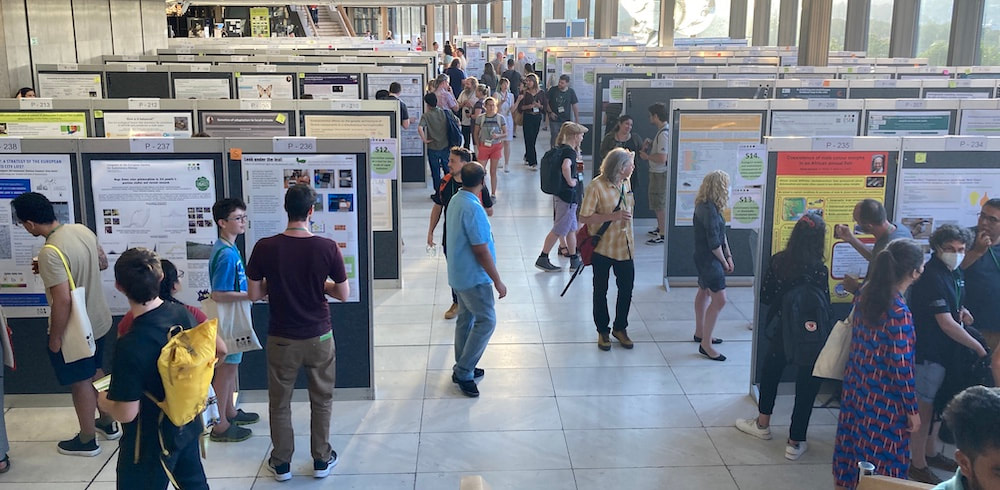
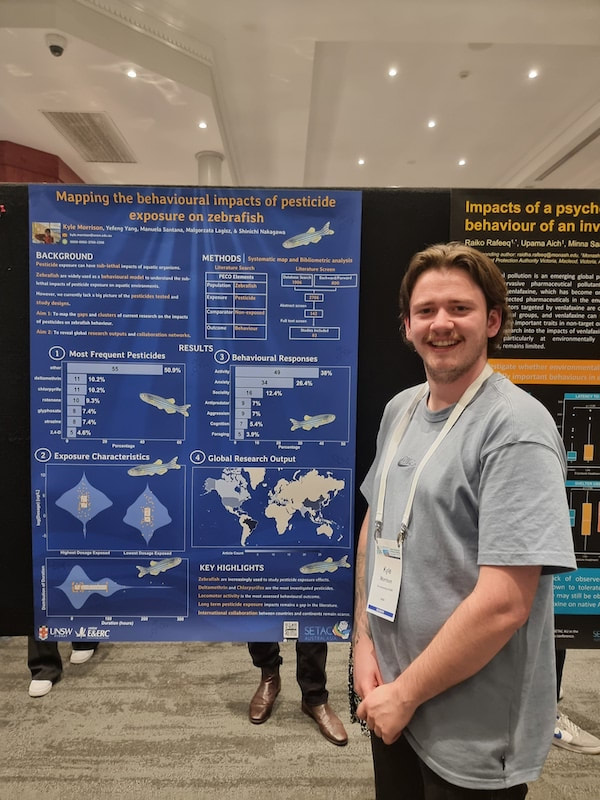

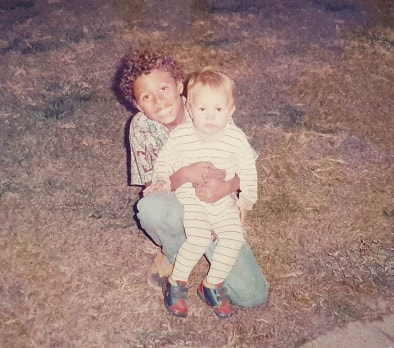
 RSS Feed
RSS Feed